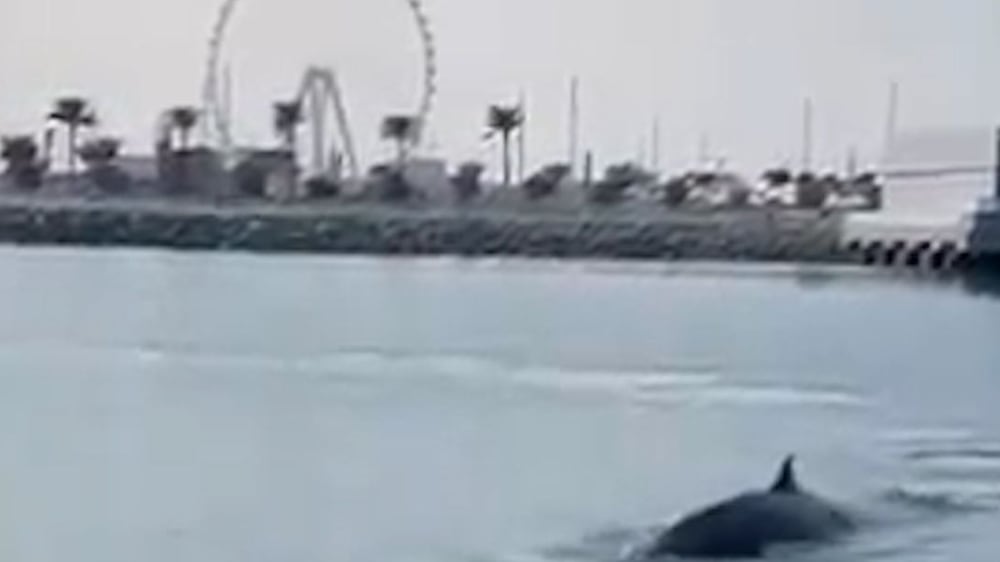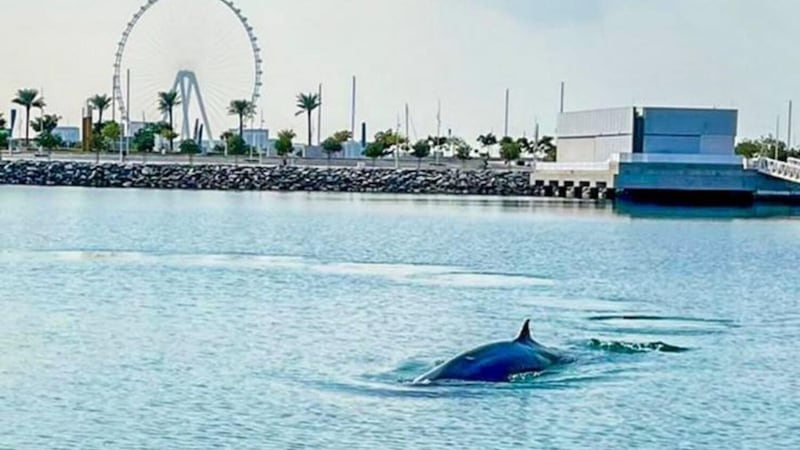A video of a killer whale that was shared by Sheikh Hamdan bin Mohammed has helped environmentalists to track a pod of the mammals in UAE waters.
The Crown Prince of Dubai shared a clip of an orca swimming around Dubai Marina during the week.
The sighting has helped environmentalists track a pod of killer whales on Friday morning, about 24 kilometres from the emirate’s shore.
Dr Ada Natoli is assistant professor at Zayed University’s Life and Environmental Sciences Department and founder of the UAE Dolphin Project Initiative.
She said the team was now aware of six females, one calf and one male, thanks to the video shared by Sheikh Hamdan.
“This is an exciting sighting. Killer whales are rare, but are regularly seen in UAE waters,” Dr Natoli said.
“It is so crucial for the general public to report sightings of whales and dolphins, which can be done via the UAE Dolphin Project Initiative website, Instagram, Facebook or by email at sighting@uaedolphinproject.org.”
Whale spotted in Dubai Harbour marina

Dr Kelly Timmins, director of conservation at Atlantis Dubai, said information on whales and dolphins in the Gulf is scarce.
Gathering evidence on the status of the their population would help create effective conservation measures that would protect these species.
She said the Dubai Dolphin Survey, which records sightings of the mammals, resumed last February.
“The last survey of its kind was conducted eight years ago, and now, with the funding and support from Atlantis and F3 Marine, the project has been able to continue,” Dr Timmins said.
“The team, led by Dr Ada Natoli, are investigating the status of the local dolphin population through boat-based surveys, which will allow occurrence, distribution as well as photo-identification data collection.
“The data will be utilised to assess the estimated abundance of the species, population structure and if possible, population trend.”







